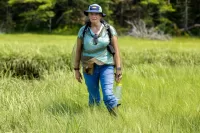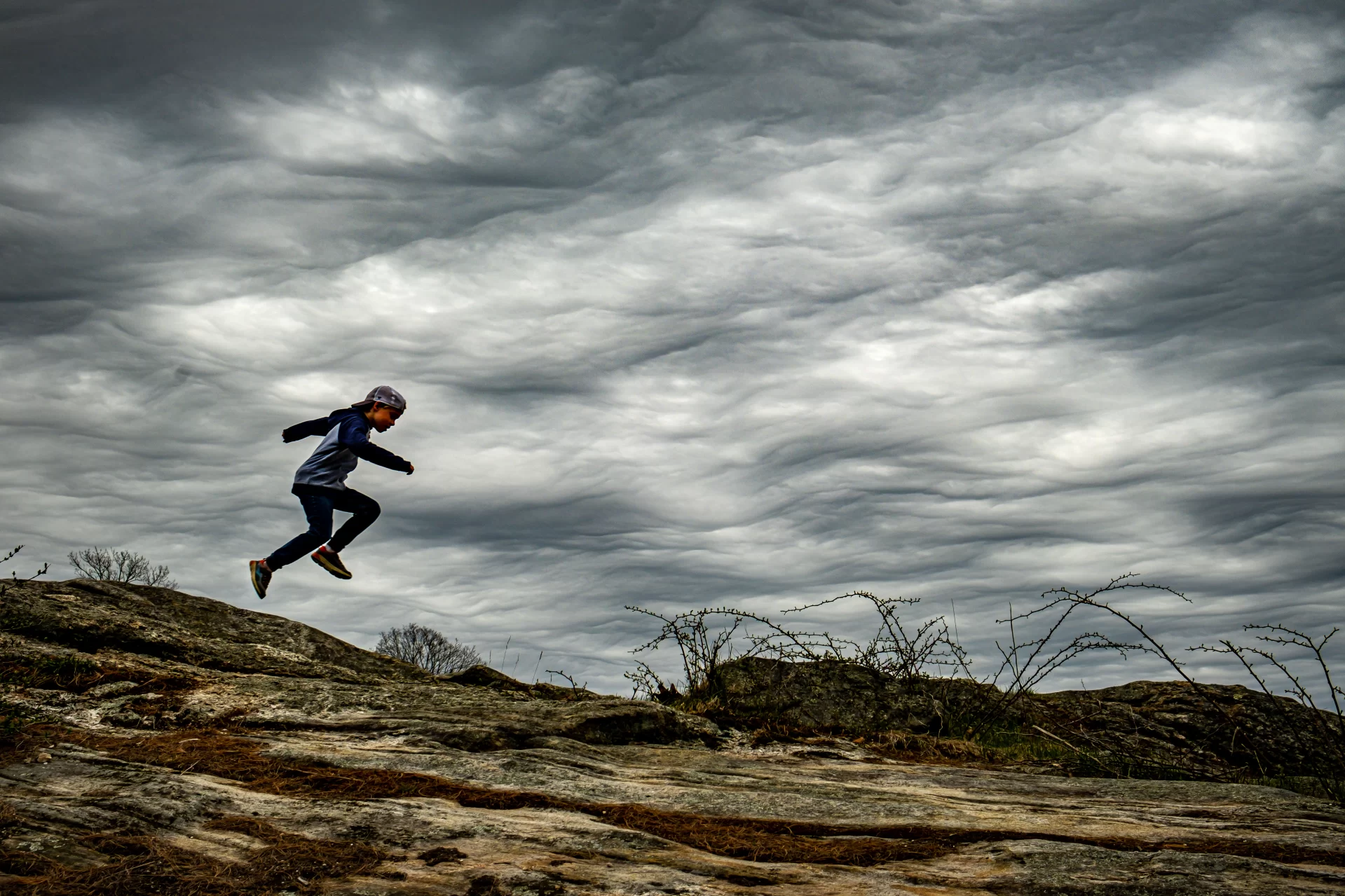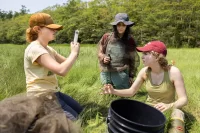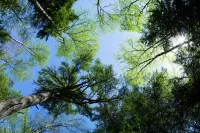
The clouds above Maine on April 23 were dark, swirling, and undulating, perhaps suggesting a psychedelic landscape painting — Salvador Dali meets Frederic Church?
The eerie cloud formations also provided a moment for Associate Professor of Biology Andrew Mountcastle to create this year’s “Best in Show” photograph for the annual Employee Photo Contest.
While visiting Wolfe’s Neck Center for Agriculture and the Environment, a sustainable farm in Freeport, with his family, Mountcastle captured this image of his son Oscar “running and jumping on the rock outcrops behind the farm” with his brother.

Like so many other skygazers on April 23 (social media was awash with photos of the clouds), Mountcastle said he was “captivated by the beautiful, dreamlike cloud formations.” He took the photograph with a Fujifilm X-S1 camera.
Many cloud names, like cirrus or cumulus, are well-known and understood. For that, we can thank the “Godfather of Clouds,” Luke Howard, an amateur British meteorologist who proposed a naming system for clouds based on Latin words in 1802.
While many familiar cloud names are now over 220 years old, the cloud formation above Maine on April 23 was officially named just six years ago. The cloud is known as “asperitas,” which draws from the Latin verb aspero, to make rough or uneven, and it’s the first cloud added to the World Meteorological Organization’s International Cloud Atlas since 1951. The atlas notes the formation’s “well-defined, wave-like structures in the underside of the cloud.”

Like most distinctive cloud formations, asperitas take their shape thanks to wind currents and turbulence in the atmosphere. As a scientist who studies insect flight, Mountcastle knows something about air dynamics, and the clouds made him think of “the unsteady, turbulent air flows that often buffet insects during flight,” he said.
Unpredictable wind gusts frequently cause foraging insects to collide their wings against leaves and flower petals — a phenomenon that is a central focus of Mountcastle’s research.




